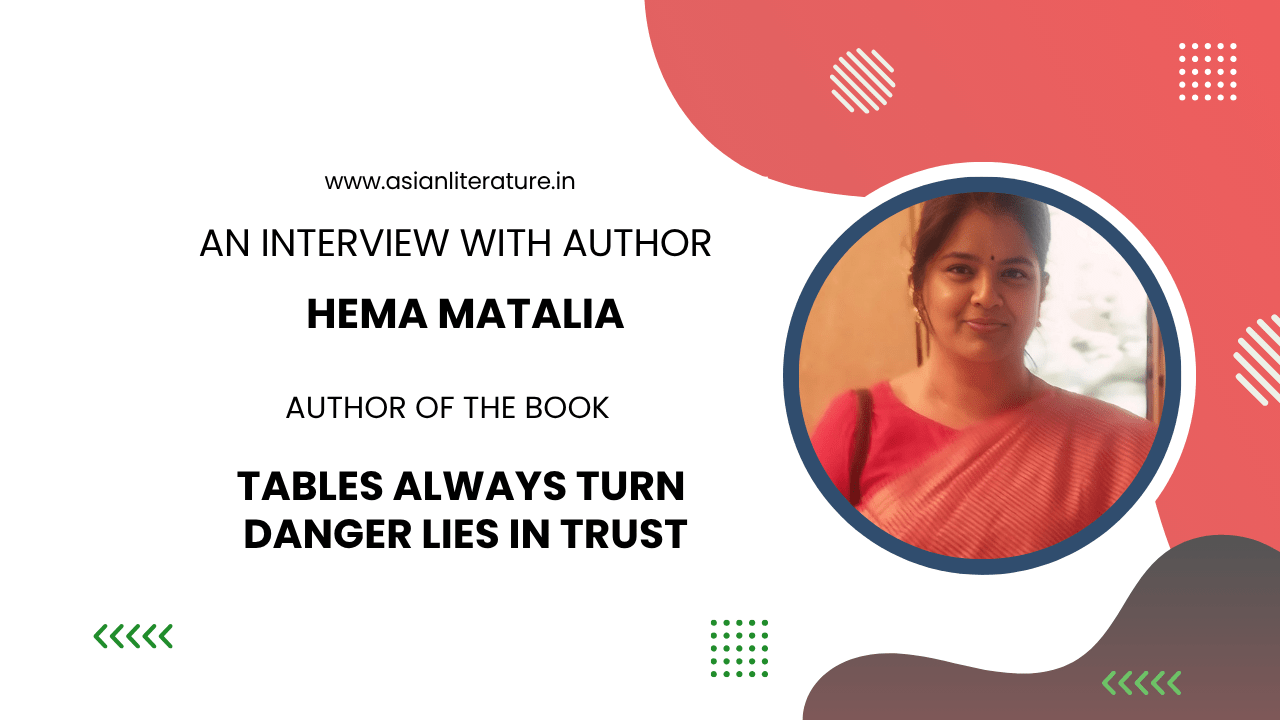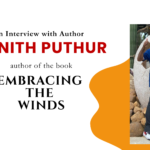
About the author: Hema Matalia is a Postgraduate in English Literature from University of Calcutta. She holds a certificate in creative writing from University of Michigan and is currently pursuing a Master’s degree in Counselling Psychology. She is proficient in a number of languages and finds creative expression in writing and painting.
Born into a family of readers, she has never known of a time when she wasn’t reading something.
She has authored “The Familiar Stranger” (suspense thriller) and “Over A Cup of Tea” (collection of short stories)
When she is not reading or writing, she spends her time catching up on crime shows and going on long walks
Q1: What was the inspiration behind “Tables Always Turn”? Is it based on any real-life event?
Answer: Tables Always Turn was inspired by the quiet resilience found in everyday moments. I’ve always been drawn to the idea that life doesn’t follow a fixed script, and that those who are underestimated often carry within them the strength to rewrite the narrative. The book draws from real conversations, observations, and my personal experiences of witnessing people reclaim their voice. It’s a reminder that nothing stays constant, and the tables do turn—even if slowly, even if silently.
Q2: The story opens with a chilling scene. Why did you choose to begin with such high intensity?
Answer: I chose to begin with a chilling, high-intensity scene because I wanted the reader to feel unsettled right from the start—to sense that something is off, that the world they’re entering isn’t predictable or safe. That tension sets the emotional tone for the rest of the story. It mirrors how trauma or conflict often enters our lives—suddenly, without warning—and forces characters (and readers) to confront things head-on. By starting this way, I hoped to create urgency and curiosity, while also laying the groundwork for the emotional unravelling that follows.
Q3: Trust, betrayal, and karma are central themes. What message did you want to convey through them?
Answer: Through the themes of trust, betrayal, and karma, I wanted to explore how fragile yet powerful human relationships are. Trust builds connections, but once broken, it leaves behind a lasting impact—often shaping who we become. Betrayal, in the story, isn’t just a plot device; it’s a turning point that reveals character. And karma acts as a silent force—a reminder that actions echo back, sometimes when we least expect it. The message I hoped to convey is that while we cannot control how others treat us, we do have agency in how we respond—and ultimately, the choices we make circle back, one way or another.
Q4: The plot weaves suspense, crime, and emotional layers. How did you strike that balance?
Answer: Striking that balance was about constantly shifting between the external and internal—the ‘what’s happening’ and the ‘why it matters.’ The suspense and crime elements drive the plot forward, but the emotional undercurrents give it depth and make the characters relatable. I didn’t want the story to be just about solving a mystery, but also about understanding what the characters are carrying within them. I layered each twist or revelation with an emotional cost, so that every action feels personal, not just plot-driven. That’s what kept the narrative grounded even as the tension escalated.
Q5: What role does Akula play in reflecting modern relationships and partnerships?
Answer: Akula represents the duality often seen in modern relationships—connection layered with control, love tangled with power. She’s complex, not easily boxed into a victim or villain, and that’s intentional. Through her, I wanted to reflect on how today’s relationships are rarely black and white. There’s emotional negotiation, unspoken expectations, and the constant push-pull of independence versus intimacy. Akula’s choices and the dynamics she navigates mirror the kind of partnerships many people find themselves in today—where trust is earned slowly, lost quickly, and sometimes manipulated in the name of love. She’s both a mirror and a warning.
Q6: The story explores consequences of past actions. How important is this theme to you personally?
Answer: The theme of facing the consequences of past actions is deeply important to me because it reflects real life—where choices, even the quiet or impulsive ones, ripple out over time. I’m fascinated by how people often try to outrun their past, but eventually it catches up in unexpected ways. Writing Tables Always Turn was my way of exploring accountability—not just in a moral sense, but emotionally and relationally. I wanted to show that healing or transformation doesn’t come from denying the past, but from confronting it, understanding it, and choosing differently going forward.
Q7: Why was it important to highlight the danger in misplaced trust?
Answer: Because misplaced trust is often the quiet beginning of many tragedies. I wanted to show how danger doesn’t always arrive as something loud or obvious—it often wears a familiar face. The consequences of that can be devastating. By bringing this to the forefront, I hoped to spark reflection on the importance of boundaries, intuition, and reclaiming agency in relationships that feel one-sided or unsafe.
Q8: How long did it take you to write this book, from concept to completion?
Answer: From the first spark of the idea to the final draft, it took me around a year and a half to complete Tables Always Turn. The concept came quickly—I knew the emotional core and ending early on—but the layers took time to build. I spent a lot of time developing the characters, reworking the timeline, and making sure the emotional threads aligned with the suspense. Some parts poured out effortlessly; others required multiple rewrites. It was less about rushing to finish and more about letting the story unfold at its own pace.
Q9: Were there any scenes or chapters that were particularly hard to write?
Answer: Yes—there were a few, but one in particular stands out. The scene where Jay confronts the truth about someone he trusted deeply and the aftermath of the betrayal was especially hard to write. Not because of the plot itself, but because of the emotional weight behind it. I had to dig into feelings of vulnerability, disillusionment, and quiet rage—and do it in a way that felt honest, not dramatic for the sake of it. I rewrote that section several times to get the tone just right. It drained me emotionally, but it was also one of the most rewarding parts of the book.
Q10: The book has cinematic appeal. Did you write it with a visual narrative in mind?
Answer: Yes, absolutely. I tend to visualize scenes as if they’re unfolding on screen—the lighting, the silence, the camera angles in my head. Writing for me is not just about words, but about atmosphere and movement. I wanted Tables Always Turn to feel immersive, like the reader was right there—watching expressions shift, noticing the tension in a room, or feeling the weight of a pause. That visual narrative helped me pace the story, build suspense, and layer emotions. So even though it’s a book, I wrote it with the rhythm of a film in mind.

